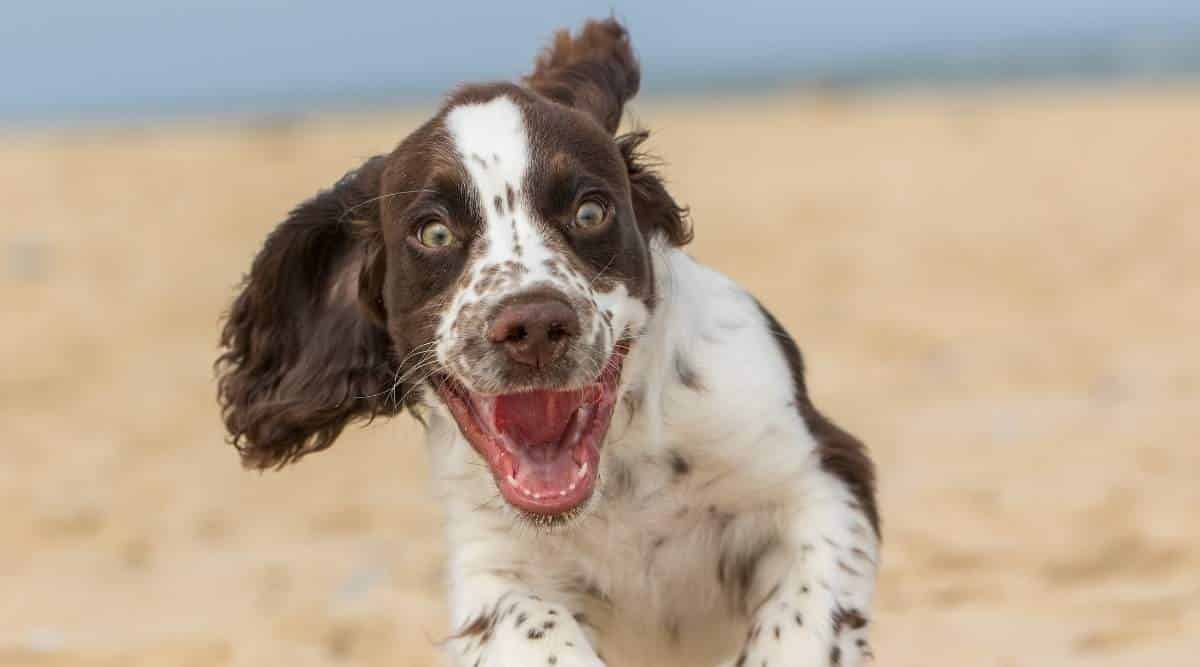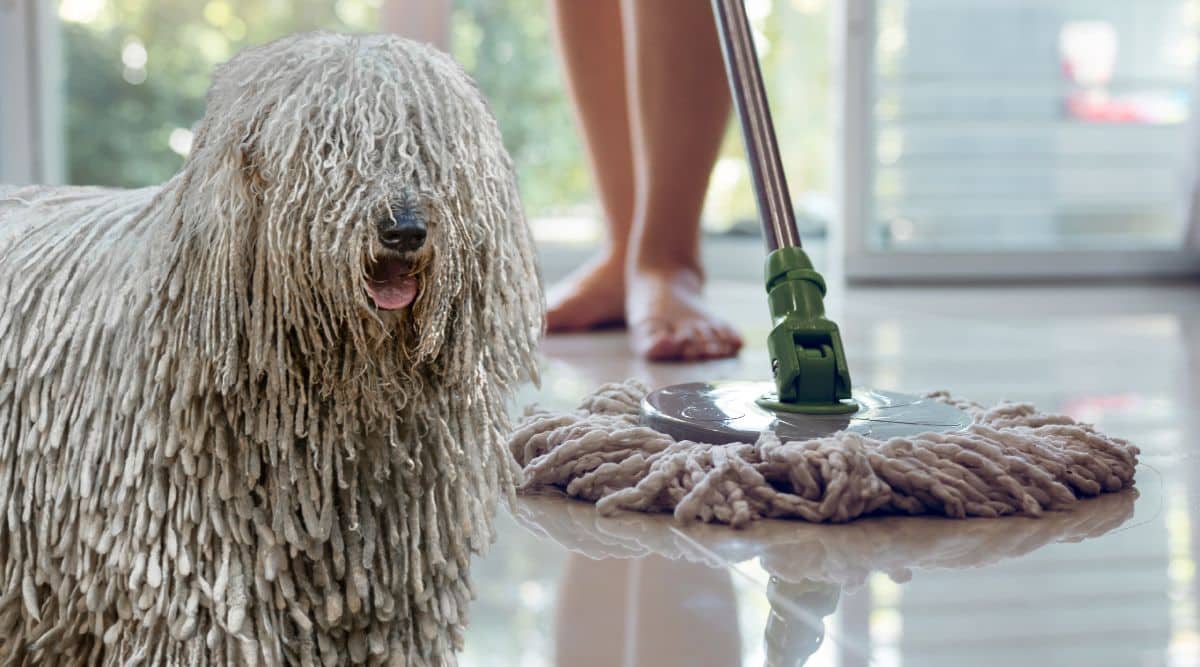Caucasian Shepherd: Traits, Facts & More
When you purchase through links on our site, we may earn a commission. Here’s how it works.
The Caucasian Shepherd Dog is a rare guardian breed that hails from the Caucasus region and the Caucasus Mountains in the country of Georgia. These dogs are quite large and traditionally worked as bear hunting, guardian, and prison guard dogs in Russia.
Table of Contents
The Caucasian Shepherd is also known as the Caucasian Ovcharka, Caucasian Mountain Dog, Circassian Sheep Dog, Russian Bear Dog, Russian Caucasian, Armenian Khobun Dog, or CO, among other names. The unforgettable breed resembles a giant, fluffy teddy bear but do not let the fluffiness deceive you. They are not always the cuddly type. These pups are fiercely loyal, incredibly strong-willed, and very courageous. These pups make amazingly loyal family guard dogs in the right homes. Caucasian Shepherds are relatively rare in the West, so getting to see one in person is a real treat.
There is much more to learn about such a mighty guardian breed. If you are lucky enough to own one as a pet, he will require significant care, exercise, and grooming. These pups are large in size, have bushy, full coats, and eat a ton. Let’s get into it and learn more about the mighty Caucasian Shepherd to see if this big boy is a good fit for your family.
History
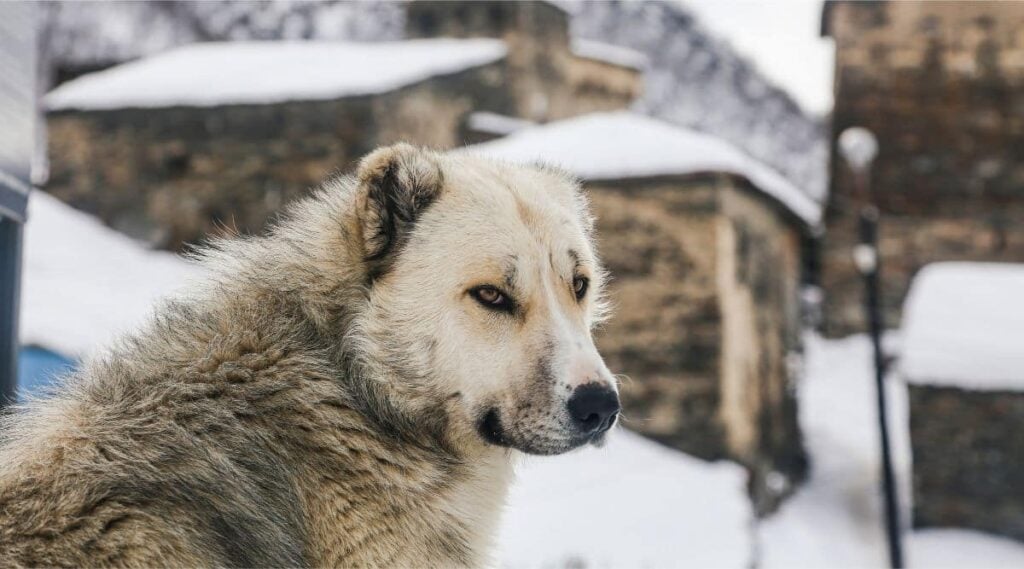
Caucasian Shepherd Dogs hail from the Caucasus Mountain region, a vast area full of shepherds and livestock. There is little known about where these giant breeds originated, but Caucasian Shepherds are believed to have been around for over two thousand years. There is archaeological evidence implying that these canines can be traced all the way back to ancient Mesopotamia.
Several breeds of guardian Molosser-type dogs hail from the Caucasus region. However, the dogs bred from the Caucasus Mountain region in Georgia are the ones historically referred to as Caucasian Shepherd dogs.
These massive dogs and several variations of the breed were working dogs and guardians there to assist these shepherds. These giant mountain dogs worked alongside shepherds for hundreds of years to protect the flock from predators, thieves, and other threats.
Sometime in the 20th century, Soviet canine breeders chose certain variances among the Caucasian dogs to create the Caucasian Shepherd dog breed. Those dogs that hail from these older dogs are considered the highest examples of the breed. They tend to have heavier bodies and longer coats compared to other mountain dog varieties from the same region.
Caucasian (aka Russian Bear Dogs) were common in the USSR in the 1920s, primarily due to their impressive physical appearance, incredibly adept hearing, sight, and fearless nature. From there, the dogs traveled around Western Europe, eventually coming to North America. In 1996 the breed was recognized as part of the AKC’s Foundation Stock Service.
The Caucasian Shepherd is currently recognized by several different registries and associations, including the American Canine Association Inc. (ACA), American canine registry (ACR), American Kennel Club (AKC), American pet registry Inc. (APRI), Continental Kennel Club (CKC), dog registry of America incorporated 9DRA), North American purebred registry incorporated (NAPR), National Kennel Club (NKC), and the Fédération Cynologique Internationale (FCI).
Caucasian Shepherds are quite rare, especially in North America. They are included in the American Kennel Club’s (AKC) Foundation Stock Service. Today they continue to be working dogs, though many are now family companions and watchdogs. They make fantastic property guardian dogs and retain their incredible flock-herding ability.
Temperament
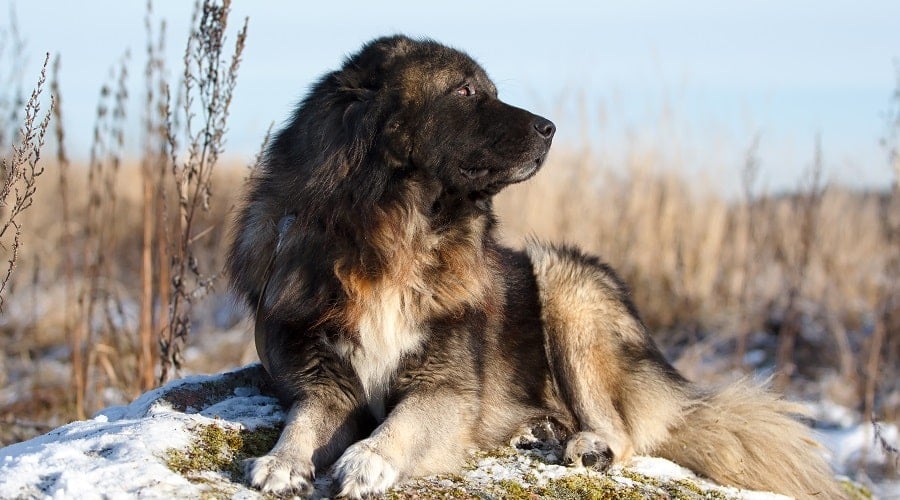
Caucasian Shepherds were initially bred to be livestock protectors and guardians. They retain a confident, courageous, strong-willed personality. When kept as family pets, these pups must have training and socialization young, as they can develop into quite ferocious canines without proper training. Bred and born to be brave, strong, alert, and powerful, these dogs are true defenders of those they hold dear. Caucasian Shepherds are protective by nature. The protective instinct covers human family members and other four-legged companions, both canine and feline.
Because these pups are so innately protective, leaving them alone with children or strangers is not wise. If their protective nature kicks in, and they deem it a threat, it may result in some overly aggressive behavior. They do not like strangers but are quite affectionate towards those humans that they know and love. They also tend to be fairly dominant toward other canines unless they are part of the pack.
These canines can be quite stubborn and strong-willed, so they need owners who are able to set and enforce firm boundaries and training. Remember, these doggos were bred to be guardians, it is what they do best, and even the most well-trained and affectionate Caucasian Shepherd still retains that guttural instinct to protect the pack loyally.
Size & Appearance
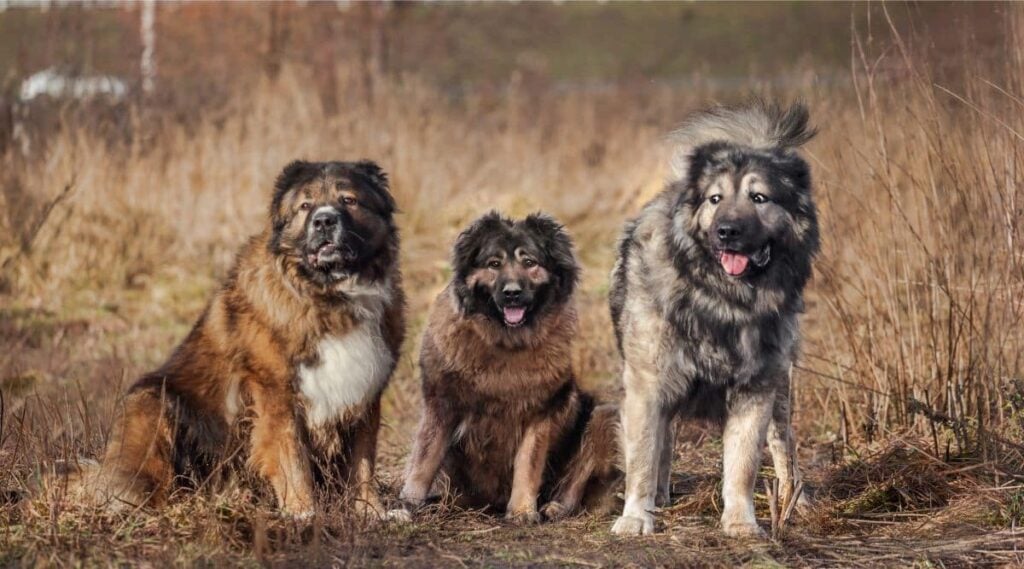
COs are truly massive-sized dogs. This is a giant breed, weighing, on average, between 99 and 200 pounds. Males are larger, weighing 110 to 200 pounds, and females are slightly smaller, between 100 to 180 pounds, quite an extensive range. A dog’s size will depend on its bloodline and origins. They stand tall, between 25 and 28 inches at the shoulders.
Everything about the Caucasian Shepherd is large. Their bodies and heads are enormous and covered in thick hair, making them seem even larger. They have moderately sized, deep-set eyes that are generally dark in color. They have medium-sized ears covered in fur and a long tail that is bushy and feathers out. Tales are curvy or curled. Traditionally the breed has cropped ears. However, in more modern times, many owners choose not to crop the ears.
They have long, muscular, straight legs with tremendous, heavy paws. Even their paws are covered in hair. Hair grows between their toes. They feature prominent noses with large nostrils. COs have a coarse, double coat of straight fur that can be short to quite long. They can come in a wide range of colors.
One thing to know about these big dogs is they tend to drool quite a bit. Though they are not the most drooling dogs we’ve ever seen, these pups are significant droolers. Owners may want to prepare and have paper towels or wipes handy.
Coat & Colors
The Caucasian Shepherd has a thick, coarse, double coat ranging from short and full to extremely long and bushy. They can come in almost any color, though they cannot come in solid black. The fluffy breed can have different patterns, including piebald or spotted.
These hefty pups shed pretty heavily due to their sheer size and hair volume. Even the short-coated variety are heavy shedders, so owners must be ready for a lot of hair. Expect a lot of dog hair around your home, on your clothes, and in your car. Owners must prepare with a high-quality vacuum, air purifiers, and plenty of lint rollers. It also does not hurt to get furniture or covers that match your dog’s hair color.
Colors recognized by the AKC for the breed are cream, fawn, gray, red, white, rust, black & gray, agouti & white, grizzle, and sable. According to the AKC, they can have brindle, piebald, or white markings, though other colors and patterns are possible. The CO often has white markings around the body and a darker mask on the face.
Exercise
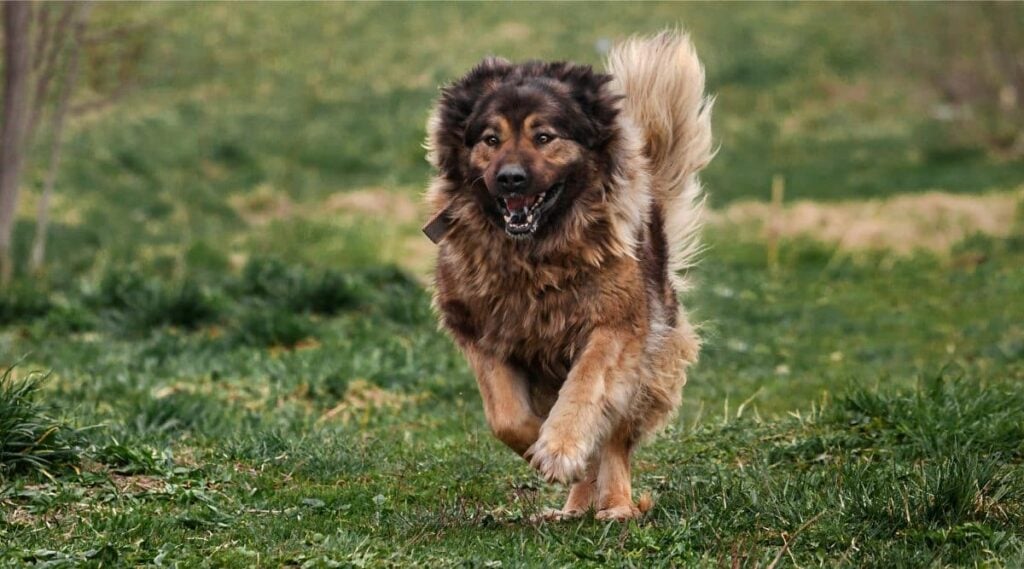
A Caucasian Shepherd needs a lot of room and exercise. They need walks every single day, as well as access to a large yard, which is securely enclosed. These canines are incredibly smart, as well as quite independent. Only ever let one of these behemoths off leash in an area where they are 100% secure and have supervision. If let off the leash unsupervised, they can get away quite quickly and are very intimidating to others. They are not extremely energetic pups, but they need regular exercise.
One thing to remember with these doggos is that they need daily walks and should have obedience and leash training early. When walking a CO, do not let them walk in front of you. They believe that the pack leader walks in front, so to keep the upper hand, humans must lead the way.
Ensure not to overwork these rugged pups, as they carry an intense amount of weight on their frames. You do not want to overwork their joints or overexert them.
Living Conditions
Because of their giant size, the breed is not a good pick for an apartment dog. They need a lot of space and a large, enclosed yard. Their thick coats keep them warm, and they do well outside but always need access to secure warm shelter, shade, and water.
These pups need families with the time to take them on daily walks, at least 1/2 hour or more. They need owners who can dedicate time and energy to proper training, obedience, and socialization. Make sure a CO has plenty of room inside and outside.
Along with needing physical exercise, Caucasian Shepherds need plenty of mental stimulation and interaction. It is best to keep plenty of toys around, including puzzle feeders, maze feeders, and hidden treat finders.
Training
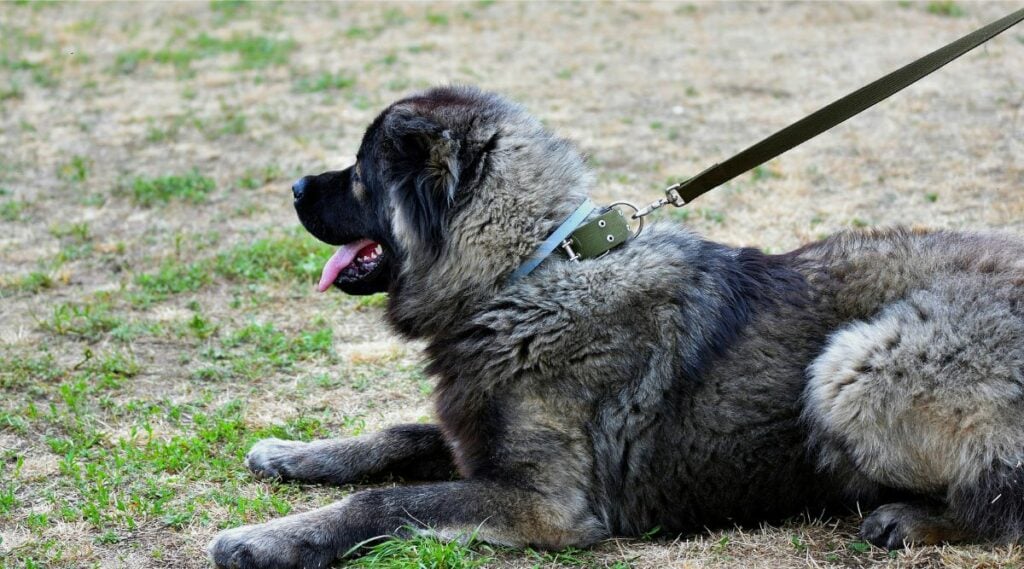
These dogs are intelligent, independent, loyal, and fearless. They may be more challenging to train, especially for inexperienced owners. They are highly protective, especially around strangers and when newcomers come into the home. Because of this, obedience training and socialization must start young.
The Caucasian dog is known to be on guard, particularly around strangers, and can become aggressive. They do not like strange canines but do well with those they have had socialization with. They require training to be around children. Children must learn to use caution and gentle care around them.
This dog breed can be both aggressive and territorial and have natural herding instincts. Which means they must always have supervision around children. Keep in mind that these dogs are bred to be massive, loyal, intense guardians, and they live up to that expectation.
Health

This breed tends to be healthy, with a lifespan of 10 to 12 years but are prone to hip dysplasia, cataracts, and obesity. They can also be prone to heart problems as well as some eye issues, including a condition called entropion.
Hip Dysplasia
Hip dysplasia is a condition that affects the joints and is common in canines of all sizes, but it can particularly impact giant breeds. This condition starts during the growth and development process, and the joint does not develop correctly. In many cases, the condition can be genetic. Because the joint forms improperly and does not fit together well, leg movement causes friction in the joint. The joint becomes loose and unstable. Activity worsens the condition and wears down the cartilage. Dysplasia can be pretty painful and progress into osteoarthritis conditions and may lead to limping and lameness.
Cataracts
The Caucasian Shepherd can be prone to cataracts, which can be a genetic inheritance. Cataracts occur when the eye lens becomes cloudy and causes blurry vision. The clouding can be white or grayish blue and is a visible discoloration. The disease can worsen, leading to poor vision and even blindness. It does not happen in every dog with cataracts, but the condition does tend to worsen. Sub cataracts can occur due to blood sugar abnormalities, referred to as diabetic cataracts.
Entropion
Entropion happens when an eyelid rolls inward, which forces the eyelashes and hair around the eye to rub against the eyeball, particularly the cornea. This can affect both upper and lower lids and affects one or both eyes, causing significant pain and irritation and requiring quick treatment. If not, it can cause even further harm, including something called corneal ulceration. Unfortunately, entropion is a genetic condition that runs in giant breeds like the Caucasian Shepherd because the ligaments near the outer corners of the eye can be quite slack, allowing an inward rolling of the eyelids.
Heart Issues
The breed has a predisposition to heart disease. Several different diseases can impact heart function. In some cases, heart defects and disease are present from birth, but in many cases, these develop later on in life. Heartworm, genetics, infection, and nutrient deficiencies are common causes of heart disease. Along with that, medications, toxins, and tumors may also factor in it. Heart disease often goes unnoticed, as early symptoms like coughing, fatigue, and shortness of breath may go unnoticed.
Obesity
It is often thought that giant breeds need to eat an incredible amount of food, and while true, they must not overeat. Obesity is an incredibly serious issue for canines of any size, but particularly concerning in giant breeds. They must eat a high-quality, nutrient-dense diet from day one. It is essential to monitor these dogs’ weight and diet and ensure a regular exercise routine to keep them at a healthy size. Obesity can lead to other issues in life, including diabetes.
Bloat
Bloat, gastric dilation volvulus (GDV), is an incredibly serious condition that often affects giant breeds. GDV happens when the stomach fills with food, fluid, or gas and becomes twisted. It can happen quite suddenly and without warning. Bloat is an emergency. Your dog must go to the closest emergency vet as soon as possible. The condition can worsen and become fatal quickly, so act immediately. It is often caused by eating too fast, overeating, or drinking too much water quite quickly.
Stress, exercising directly after eating, genetics, age, and the use of raised food bowls are common risk factors for bloat. Signs and symptoms include pacing, restlessness, a distended or swollen abdomen, pain, distress, dry heaving, excessive drooling, rapid breathing and panting or collapse, and lethargy.
Nutrition
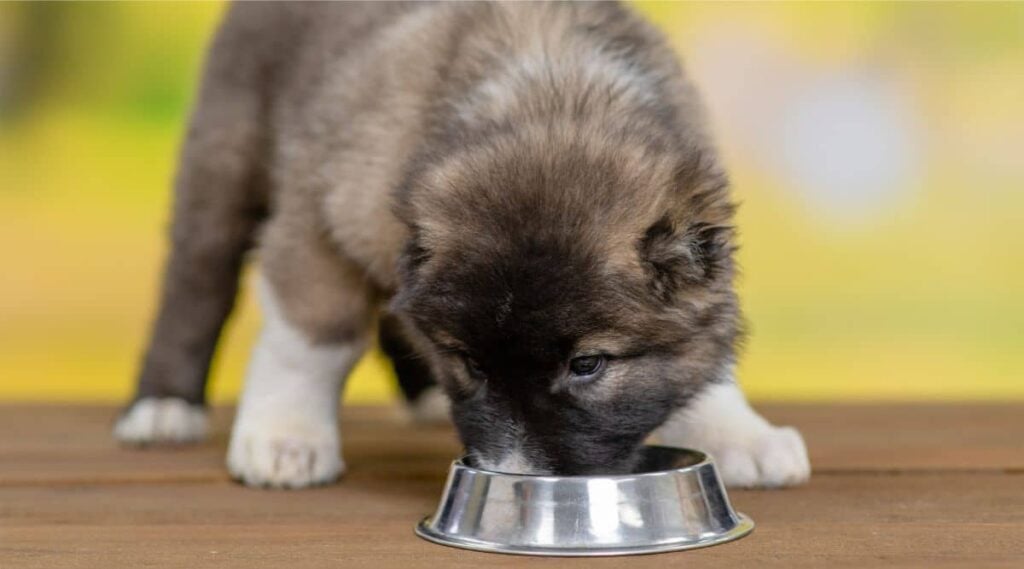
These pups do best on dog food formulated specifically for giant breeds. Their diet and nutritional needs will change as they go from growing puppies to adult dogs. Because they overeat, and obesity is a big concern, it is important to stick to a feeding routine and always feed your dog the recommended amount of food. It is also a good idea to feed these dogs smaller meals multiple times daily due to the risk of bloat.
This breed will do well on a mix of dry kibble and wet food. Always consider large breed formulas, as well as fresh food. You always want to feed them the best possible nutrition you can. Occasional treats throughout the day are fine, but remember that overeating is a big concern with the breed.
Grooming
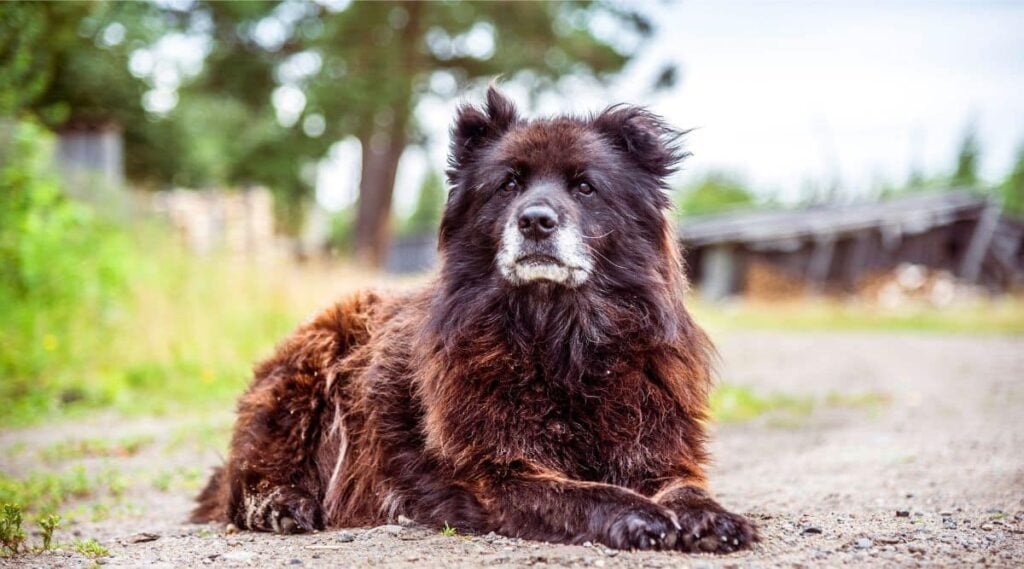
There is no doubt about it. This breed will need regular, significant grooming. Because they have so much hair, mats and tangles can happen quickly without proper grooming and brushing. Owners must invest in multiple kinds of brushes, grooming combs, and detanglers.
Expect a heavy shed at least once, and likely twice a year. This breed needs brushing at least twice a week to remove lifeless hair, prevent matting, and remove debris that often gets in the coat. Bathing should only happen occasionally, and it is best to go to a professional groomer unless you have the unique skills to handle a massive, wet, slippery dog.
Along with brushing and grooming, these dogs will also need regular nail clipping, teeth brushing, and ear cleaning. This breed tends to have wax buildup in the ears, so checking at least once a week is essential. Owners may want to invest in ear wipes and other ear cleaners to make the process smoother.
Breeders & Puppy Costs
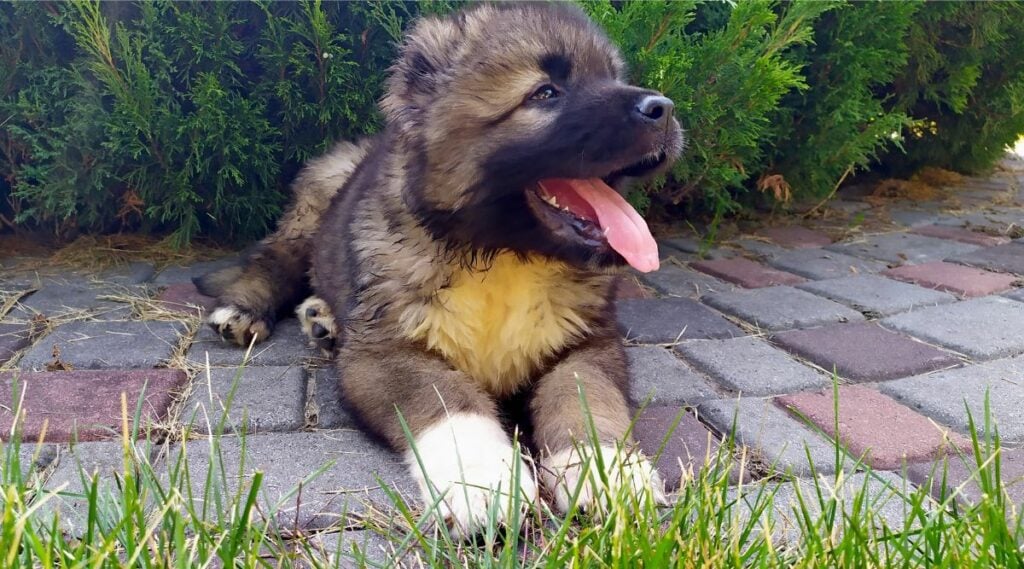
These pups have an extremely high price tag. It is not unusual to see a reputable breeder in the United States asking $2,500 or more. Less qualified or experienced breeders may charge a little less, starting around $1,500 and up. Male Caucasian dogs cost more than females. However, both are quite expensive. This breed is challenging to find, which can add hundreds of dollars to the price tag. Owners must be ready to do their research, as well as expect a wait if they want a purebred, high-quality puppy.
Additionally, because this is a giant breed, they will need more of everything. More food, larger-sized toys, extra-large crates, feeding bowls, collars, harnesses, leashes, poop bags, treats, and more. Extra-large supplies cost more, so owners must prepare for the financial commitment these pups bring.
Owners must also factor in the breed’s health care cost, supplies, and the initial puppy cost. If you adopt one of these big dogs, it is worthwhile to investigate pet insurance. Companies often offer wellness plans that can help with regular care, while pet insurance plans can help with emergencies. Because this breed has a propensity to heart disease and bloat, looking into insurance can be extremely helpful in covering emergency medical care costs.
Rescues & Shelters
Finding a Caucasian Shepherd in a shelter is unlikely, but it is possible. Some breed-specific rescue groups are dedicated to rescuing, fostering, and rehoming the giant teddy bear dog. Because they are so large, powerful, and innate, dedicated guardians, these big pups are not for everyone. Because no one wants a puppy to end up in a shelter, it is essential to research first and be well aware of what one is getting into when adopting the Caucasian Shepherd.
Inquire with your veterinarian, local shelters, breed-specific rescue groups, and large dog rescues if you want to adopt a shelter dog. A rescue pup can be an excellent option for owners who do not want to take on the work and pressure of a new puppy but still want to give a giant, lovable dog a good home. Because they are a giant and aggressive breed, it may be hard for these big dogs to get adoptions out of shelters. So this is an excellent option for both owners and dogs.
As Family Pets
These rugged canines may not be your first thought for a popular companion dog, but despite being quite large and natural-born guardians, Caucasian Shepherds can be fantastic family pets. They are incredibly large, so any home with them must train canine and human family members in proper care and handling techniques. This is especially true in homes with young children and other animals.
These dogs can absolutely be referred to as high maintenance. They need plenty of time, patience, effort, and financial commitment. Along with a lot of space, they need a lot of attention. Bringing home one of these pups without enough space or time to give them is a big mistake. They will become bored, aggressive, and hard to manage.
Consider spending some time with this breed or another giant breed before deciding to adopt. These dogs need a special kind of owner due to their generous size, guardian nature, health needs, and high maintenance care requirements. Owning any dog, but particularly one as large and unique as these, is both a fantastic privilege and a huge responsibility. Owners must be aware of what they are getting into.
Final Thoughts
The Caucasian Shepherd is a relatively rare, glorious-looking, giant canine. The breed has long been bred as a loyal guardian and absolutely lives up to the task. They can make amazing family pets with the right owners, a loving home, proper training, and dedicated care. This dog is an incredibly loyal, hard worker, and they will not disappoint you in that regard. Proper socialization makes them pretty affectionate, and they even do well with children and other pets.
When adopting a giant dog breed, owners must prepare for the extra cost, extra-large supplies, plenty of room, and extra care. Just because these dogs are big, protective, and independent does not mean they like to be left alone all the time or do not crave plenty of human interaction and attention. You will never forget if you have the privilege of meeting one of these beautiful giant, fluffy guardians.


